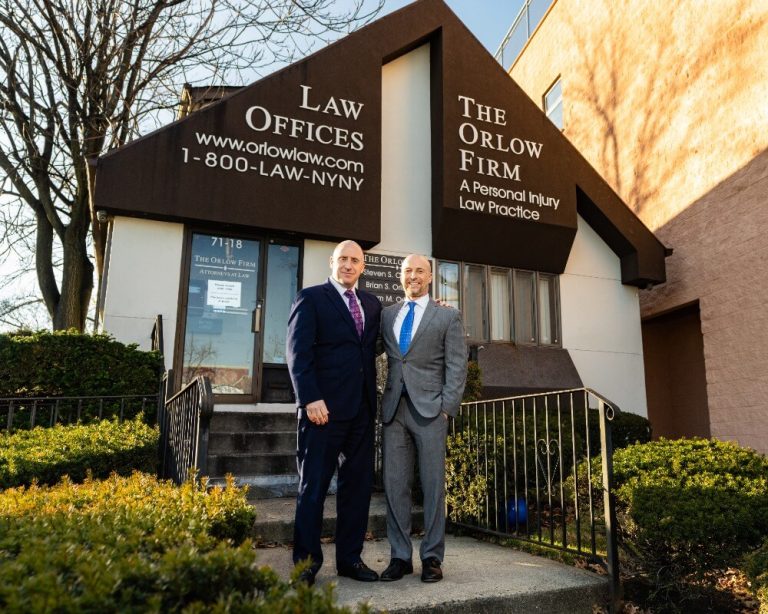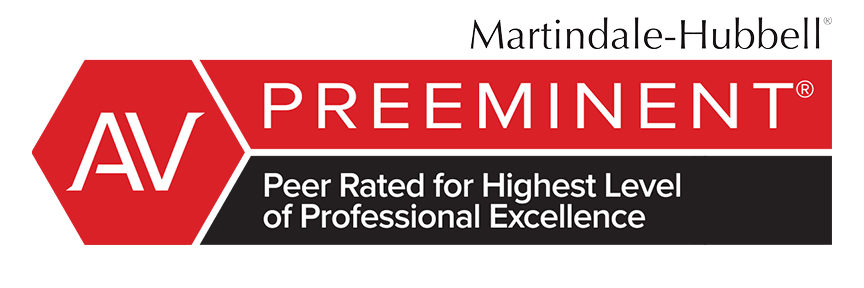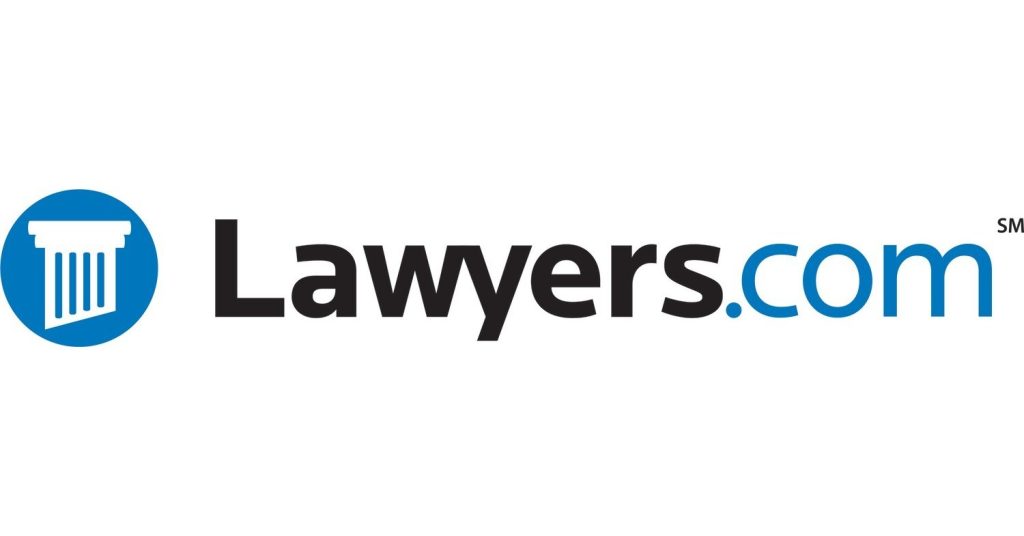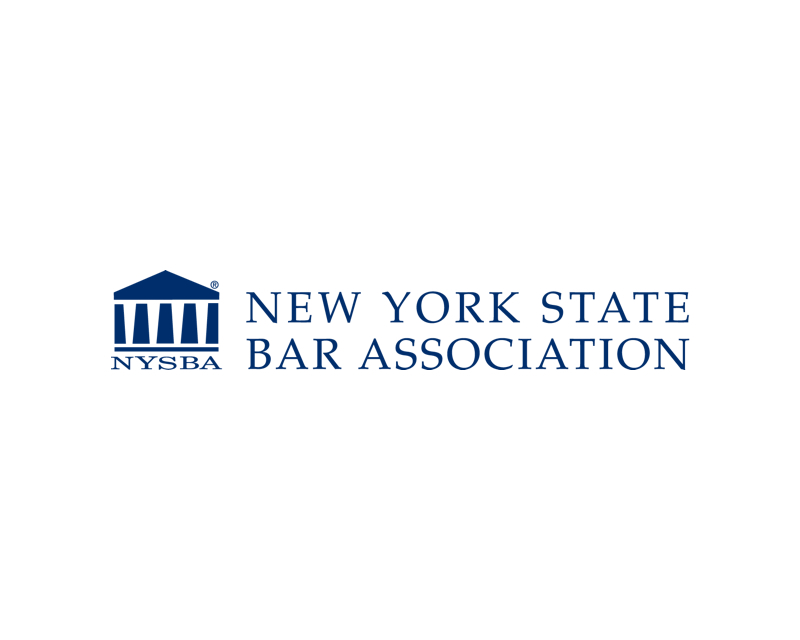The Following People Contributed to This Page
Cindy Cordova is a seasoned legal writer with over seven years of experience crafting clear, informative, and professional content for law firm websites. With a B.A. in English from Trinity Christian College, she combines her strong writing background with a deep understanding of legal topics to help firms connect with their clients through trustworthy and accessible content.
- September 19, 2025
What Are Structured Settlements and How Do They Work in NYC Personal Injury Cases?
Quick Answer: In New York City personal injury cases, a structured settlement is an agreement where the defendant or their insurer pays the injured party (the plaintiff) a series of payments over time instead of a single lump sum. These payments are typically funded through an annuity and can be tailored to the plaintiff’s specific needs, potentially including upfront lump sums and future periodic payments.
Here’s a more detailed explanation of structured settlements vs lump sum settlements:
- How They Work:
- Negotiation: Structured settlements are negotiated between the plaintiff and the defendant (or their insurance company) as a part of the overall settlement agreement for the personal injury claim.
- Annuity Funding: The defendant typically purchases an annuity from a life insurance company. This annuity then generates the predetermined schedule of payments to the plaintiff.
- Payment Schedule: The annuity is designed to provide payments according to a specific schedule, which can be customized. This may include an initial lump sum payment, followed by regular periodic payments (e.g., monthly, quarterly, annually), or a combination of both, over a set number of years or for the plaintiff’s lifetime.
- Tax Advantages: Structured settlements often offer significant tax advantages. In many cases, the periodic payments received by the plaintiff may be exempt from federal income tax, making the net value of the settlement higher than a comparable taxable lump sum.
- Flexibility: Despite being structured, these settlements can be highly customized to meet the plaintiff’s unique financial needs, including the timing and amount of payments, aligning with anticipated future expenses or income replacement.
- Protection Against Mismanagement: By disbursing payments over time rather than all at once, structured settlements can provide a level of financial security, protecting the injured party against the risk of a large lump sum being quickly depleted or mismanaged.
- Advantages of Structured Settlements:
- Predictable Income: Provides a reliable and guaranteed stream of income, which is especially important for individuals with long-term injuries or disabilities requiring ongoing care and support.
- Tax Benefits: Payments are generally received tax-free, which can significantly increase the actual value received by the plaintiff compared to a taxable lump-sum settlement.
- Financial Security: Protects against the risk of rapidly depleting funds due to overspending, poor investment decisions, or unforeseen circumstances.
- Disadvantages of Structured Settlements:
- Lack of Flexibility: Once the structured settlement agreement is finalized and approved, the payment schedule is legally binding and can be very difficult to change, even if the plaintiff’s financial needs or life circumstances change unexpectedly.
- Potential for Lower Overall Payout: In some scenarios, the total amount received over time through a structured settlement might be less than what a lump-sum settlement, if prudently invested, could have yielded, particularly in favorable market conditions.
- Selling Future Payments: While it is possible to sell future structured settlement payments to a factoring company for an immediate lump sum, this typically results in a discounted payout and may require court approval, further reducing the overall value.
- Application in NYC Personal Injury Cases: Structured settlements are frequently utilized in New York City personal injury cases involving:
- Catastrophic Injuries: Where the injured party has sustained severe, long-term injuries requiring extensive medical care, ongoing rehabilitation, and lifelong financial support.
- Cases Involving Minors: To ensure settlement funds are protected and disbursed responsibly over time, often until the child reaches adulthood or specific milestones.
- Anticipated Future Expenses: When future medical expenses, lost wages, or care costs are expected for an extended period, a structured settlement can guarantee funds are available to cover these ongoing needs.
- Important Considerations:
- Legal Advice: It is crucial to consult with an experienced personal injury attorney in NYC to fully understand the pros and cons of a structured settlement versus a lump sum, and to determine if it’s the right option for your specific case and long-term financial needs.
- Review by a Judge: In cases involving minors or individuals deemed legally incapacitated, the structured settlement agreement must undergo thorough review and approval by a judge to ensure it is genuinely in the child’s or incapacitated person’s best interest.
- Tax Implications: Understanding the precise tax implications of a structured settlement is vital. It is highly advisable to consult with both legal and qualified financial professionals to ensure the settlement is structured optimally for tax efficiency and long-term financial planning.
If you or a loved one has been seriously hurt in an accident a personal injury attorney can help explain your options. To talk through whether a structured settlement is right for you, call The Orlow Firm at (646) 647-3398 for a free consultation.
What Is a Lump Sum Payment and When Is It Used in New York Injury Claims?
A lump sum payment is a single payment made to settle a personal injury claim. Instead of receiving the money over time in smaller installments, you get the full amount at once. This type of payment is common in New York City personal injury cases where the injured person wants or needs immediate access to the entire settlement.
In NYC, lump sum payments are often used in personal injury cases involving:
- Car accidents : If your injuries meet the “serious injury” threshold, you may be offered a lump sum payment to cover damages like pain and suffering, lost wages, and medical bills.
- Slip and fall cases : Property owners may offer a single settlement if you’re injured due to unsafe conditions on their premises.
- Workplace injuries : While workers’ compensation is usually paid over time, a lump sum settlement may be negotiated in some cases.
- Medical malpractice : If you’ve been harmed due to a healthcare provider’s mistake, a lump sum may be part of a negotiated payout.
Lump sum payments can be helpful when you have large, upfront expenses such as surgery, home renovations for accessibility, or overdue bills caused by time off work. They also give you greater control over how you use the money.
However, once you accept a lump sum, you typically can’t go back and ask for more money later—even if your condition gets worse. That’s why it’s important to carefully consider your long-term needs before agreeing to this type of settlement.
Some reasons a person in NYC might choose a lump sum payment include:
- Immediate financial need : You may have rent, medical bills, or other costs that can’t wait.
- Willingness to manage the money : Some people prefer to control their full settlement rather than get periodic payments.
- No ongoing medical issues : If your injury is well understood and no future treatments are expected, a lump sum may make sense.
Before accepting any settlement, it’s wise to speak with a personal injury attorney. A lawyer can help you understand if a lump sum is the right choice for your specific situation and make sure the offer is fair and complete.
If you’ve been injured in an accident in New York City and are considering a lump sum settlement, call The Orlow Firm at (646) 647-3398 for a free consultation. We’re here to help you understand your options and make informed decisions about your future.
What Are the Key Differences Between Structured Settlements and Lump Sum Payments?
When resolving a personal injury claim in New York City, you may have the choice between a structured settlement or a lump sum payment. While both options aim to provide compensation, they work very differently. The choice you make can impact your financial situation for years to come. Here are the key differences to understand:
- Payment Timing: A lump sum gives you all the money at once. A structured settlement pays you smaller amounts over time, often monthly or yearly.
- Control Over Funds: With a lump sum, you control how and when to spend the money. Structured settlements offer fixed payments, which can help if you’re worried about spending too quickly.
- Tax Treatment: In most personal injury cases, both options are tax-free for compensatory damages. However, the structured settlement may provide more predictable long-term tax outcomes.
- Financial Planning: Structured settlements are useful for covering long-term needs like medical care or living expenses. Lump sums allow more flexibility for large one-time purchases, such as paying off debt or buying a home.
- Risk of Mismanagement: Lump sums carry a higher risk of being spent too fast, especially without a financial advisor. Structured settlements are designed to help avoid this by spreading the money out over time.
For example, someone injured in a NYC car accident who faces long-term medical care might benefit from regular structured payments. On the other hand, someone who needs to pay off major bills right away may prefer a lump sum.
The courts in New York, especially in cases involving children or individuals with disabilities, often favor structured settlements. These can provide more long-term support and help protect vulnerable individuals from financial abuse or poor decisions.
Each case is different, and it’s important to fully understand your financial needs before choosing. Factors like your age, injury type, current debts, and future expenses all play a role in the decision.
If you’re unsure which option fits your situation, speaking with a personal injury lawyer can be helpful. A lawyer can explain these choices in more detail and work to ensure your settlement supports your future needs. For compassionate legal help, contact The Orlow Firm at (646) 647-3398.
Which Option Offers More Financial Security After a Personal Injury in NYC?
Choosing between a structured settlement and a lump sum payment is an important decision after a personal injury case in New York City. Each option offers different kinds of financial security, depending on your situation, expenses, and long-term needs.
Structured settlements provide payments on a regular schedule, such as monthly or yearly. These are often used when a person needs steady income over time. This can be helpful if the injury caused permanent changes like a disability or long-term medical care needs.
Some benefits of a structured settlement include:
- Stable income: Ongoing payments can help cover living expenses, medical bills, and other regular costs.
- Less risk of spending it all: Since you don’t receive all the money at once, you’re less likely to run out of funds early.
- Tax benefits: In most cases, the payments are tax-free, and spread out income may help avoid tax complications.
However, structured settlements may not be flexible. Once the payment plan is set, it can be hard to change. If you need a large amount later—for example, to buy a home or pay for major surgery—you might not have access to enough cash right away.
Lump sum payments mean you receive the full settlement amount at once. This can be useful if you need to pay high medical bills, move to a new home, or invest in long-term care.
Advantages of a lump sum payment may include:
- Immediate access to funds: Useful for paying off debts or handling urgent needs.
- More control: You decide how to manage, invest, or spend the money.
However, this choice also comes with risks. Without careful planning, it’s easy to spend the money too quickly. Some people also face tax issues or lose government benefits if the lump sum is not handled properly.
In New York City, financial security depends on your specific needs:
- If your injury keeps you from working, regular structured payments may bring more peace of mind.
- If you need to pay large one-time expenses, a lump sum may make more sense.
It’s important to think about both your short-term and long-term needs before making a choice. Speaking with a personal injury lawyer can help you understand which option supports your financial future best.
If you’ve been injured in NYC and have questions about your settlement options, call The Orlow Firm at (646) 647-3398 for a free consultation. We’re here to help you through the process with care and guidance.
How Do Taxes Affect Structured Settlements vs. Lump Sum Payments in New York?
In most New York personal injury cases, money received from settlements or court awards is not taxed. This includes both structured settlements and lump sum payments for physical injuries or sickness. However, the way you receive the money—all at once or over time—can impact your financial planning and how taxes may apply to related situations.
Here’s what you need to know about how taxes affect structured settlements versus lump sum payments in New York:
- Structured Settlements: These are paid out in regular installments, often monthly or yearly. The full amount of each scheduled payment is generally tax-free if it’s for physical injuries.
- Lump Sum Payments: If you receive all the money at once, the full amount for physical injuries is also typically tax-free. However, if you invest the money and earn interest, that interest is taxable.
Let’s look at some examples to make it easier:
- Example 1 – Structured Settlement: You settle a lawsuit for $500,000 after a car accident. You choose to receive $25,000 per year for 20 years. Each yearly payment is not taxed as long as it’s compensation for your physical injuries.
- Example 2 – Lump Sum: Instead of small payments, you take the full $500,000 at once. That $500,000 remains tax-free. But if you put that money in a savings account or investment that earns interest, the interest income is taxable.
There are a few special considerations to keep in mind:
- Punitive Damages: If part of your settlement includes money meant to punish the other party, that portion may be taxable.
- Lost Wages or Emotional Distress: If these were part of the lawsuit and are not tied to a physical injury, those parts of the settlement could also be taxable.
In New York City, taxes are handled at the federal, state, and city levels. While injury-related compensation is usually safe from taxes, how you manage or invest that money can trigger future tax obligations. Planning ahead can be important.
Before deciding between a structured settlement and a lump sum payment, it’s a good idea to understand the tax impact. An experienced personal injury lawyer and a financial advisor can work together to help you make the choice that’s right for your long-term needs.
If you have questions about your specific case, the attorneys at The Orlow Firm are here to help. Call (646) 647-3398 for a free and confidential consultation about your New York personal injury case.
Can You Choose Between a Structured Settlement and Lump Sum After an NYC Personal Injury?
Yes, in many New York City personal injury cases, you can choose between a structured settlement and a lump sum payment. However, your ability to choose may depend on factors like the details of your case, the agreement with the insurance company, and whether your case was settled in or out of court.
Let’s break it down further to help you understand how this choice works.
What Influences Your Settlement Options?
When your case settles, both sides—your lawyer and the insurance company—negotiate the terms. During this process, you may be offered:
- A lump sum payment : One large payment made all at once.
- A structured settlement : A series of smaller payments sent to you over time (monthly, annually, etc.).
Your personal injury lawyer works with you to decide which option better fits your needs. They can also help with negotiating the final terms of your settlement.
When Might You Not Be Able to Choose?
- If a judge approves a structure : In some cases—especially if the injured person is a minor or legally disabled—a judge may require a structured settlement to protect their long-term needs.
- If the insurance company won’t agree : Both parties must agree on the terms. If one side won’t allow a structured settlement, a lump sum may be the only choice (or vice versa).
Making the Right Choice for Your Situation
There’s no one-size-fits-all answer. Some people choose a lump sum so they can pay medical bills or debts right away. Others prefer a structured settlement for steady income over time, which can help avoid spending the money too quickly.
In NYC, the high cost of living and medical care can make this choice even more important. For example, a Bronx resident who needs lifetime care after a serious accident may benefit more from steady payments they can count on. A Queens construction worker injured on the job might prefer a lump sum if they need funds to cover lost income or start a new career path.
Talk to a Lawyer Before You Decide
These decisions can have long-term effects on your finances and peace of mind. A personal injury attorney can review your medical needs, job situation, and future goals to help you understand your options.
If you’re considering a settlement after an NYC accident, it’s important not to rush. Call The Orlow Firm at (646) 647-3398 to get clear answers about your legal options and find the path that’s right for you.
When Might a Structured Settlement Be the Better Option in NYC Injury Cases?
In some New York City personal injury cases, a structured settlement may provide more long-term benefits than a lump sum payment. A structured settlement is when you receive your compensation in smaller payments over time, instead of getting all the money at once. This type of payout can be a better option depending on your age, injury, or financial situation.
Here are some situations where a structured settlement might be the better choice:
- You have a long-term or permanent injury: If your injury will require ongoing care—like physical therapy or medication—a structured settlement can ensure that money is available when you need it.
- You are concerned about spending a large sum too quickly: Some people worry they might use up the money from a lump sum too fast. Structured payments help spread out the money, making it easier to manage over time.
- You are a minor or mentally disabled: For children or adults who are unable to manage their own finances, structured settlements can provide steady support over many years. Courts in NYC often favor structured settlements in these cases to help protect the person’s future.
- You want predictable, tax-free income: In most personal injury cases, structured settlement payments are tax-free. Receiving steady, regular payments can help with planning and reduce the risk of tax issues down the line.
- You need to match payments with future expenses: Some people use structured settlements to match planned payments with big future needs, like paying for college tuition, buying medical equipment, or covering living expenses after retirement from work.
For example, if a young adult in Brooklyn is seriously injured in a car crash and cannot return to work, a structured settlement could provide monthly funds for living expenses and health care instead of a single large payment that could run out.
Structured settlements can offer peace of mind, but they are not right for everyone. If you are thinking about accepting a structured settlement in your NYC personal injury case, it’s important to understand how it will affect your financial future. A personal injury lawyer can help you look closely at both options and choose what makes the most sense for your needs, both now and in the future.
To speak with someone about your case, call The Orlow Firm today at (646) 647-3398 for a free and confidential consultation.
When Is a Lump Sum Payment the Right Choice in a New York Personal Injury Case?
A lump sum payment can be an appropriate choice in a New York personal injury case depending on your personal and financial needs. Unlike structured settlements, which pay out over time, a lump sum gives you the entire amount up front. This option offers flexibility, but it’s important to consider your situation carefully.
Here are some common reasons why a lump sum payment may be the right choice:
- You need immediate access to money: If you have large bills to pay—such as medical debt, rent, or home repairs—a lump sum can help cover those quickly.
- You plan to make a big purchase: Some people use the money to buy a home, relocate, or invest in a business. A lump sum makes that possible without waiting on smaller future payments.
- You are financially experienced or working with a trusted financial advisor: If you have the knowledge or professional help to manage the money wisely, a lump sum may give you greater control.
- The total settlement amount is smaller: In lower-dollar settlements, the benefits of a structured payout may not be worth it. A lump sum can be more efficient in these cases.
- You don’t want to rely on long-term payments: Some people prefer not to depend on scheduled payments, especially if they are unsure of their future needs or want to keep full control of the funds today.
Of course, lump sum payments may also have downsides. Receiving one large amount at once can be tempting to spend quickly. Without careful planning, the money may not last, especially if you have ongoing medical or living needs.
In New York City, where the cost of living is high, a lump sum might allow you to make critical decisions faster. But the fast pace of life here can also increase the risk of financial mistakes if the money isn’t handled carefully.
If you’re unsure which option is best, it can help to speak with a personal injury lawyer. At The Orlow Firm, we can work with you to understand your needs and explain your legal options.
To discuss your case, call (646) 647-3398 for a free consultation.
Do Minors and Disabled Individuals Benefit More from Structured Settlements in NYC?
Structured settlements can be especially helpful for minors and individuals with disabilities involved in personal injury cases in New York City. These payouts are made in a series of scheduled payments over time, instead of one large lump sum. For many families, this structure offers stability, protection, and peace of mind during uncertain times.
Why minors may benefit more from structured settlements:
- Financial protection over time: Because structured settlements are paid monthly, yearly, or at key milestones (like turning 18 or 21), they help prevent a child from receiving and potentially mismanaging a large sum of money all at once.
- Long-term planning: Payments can be scheduled for important life stages, such as paying for college or starting adult life. This steady income can help secure the child’s future.
- Court preference: In New York, courts often favor structured settlements for minors. Judges generally aim to protect the child’s best interests by ensuring the funds are used wisely over time.
Why structured settlements suit individuals with disabilities:
- Preserving access to benefits: A lump sum payment could raise someone’s income or assets above the limit for government benefits like Medicaid or Supplemental Security Income (SSI). Structured settlements, set up properly, can help avoid this issue.
- Ongoing support: Regular payments help ensure the person can afford long-term care, medical equipment, therapy, or home services. It offers predictable financial support, which is especially important when facing lifelong needs.
- Custom payment schedules: Payments can be tailored to meet specific care costs over time, helping to cover medical expenses without quickly running out of money.
Special Needs Trusts: In some cases, a structured settlement can be combined with a special needs trust in New York. This type of trust holds the funds in a way that protects eligibility for public assistance. A personal injury lawyer can help families set up this type of trust when needed.
Every case is different, and deciding between a lump sum and structured settlement depends on many factors. For children and disabled individuals, a structured settlement is often the safer, smarter choice in NYC personal injury cases. It can offer lasting support, protect public benefits, and provide a sense of financial security over time.
If you’re unsure what option is right for your situation, speaking with a New York City personal injury attorney can help. Contact The Orlow Firm at (646) 647-3398 for a free and confidential consultation.
How Can a Personal Injury Lawyer Help You Decide Between a Lump Sum and Structured Payout?
Deciding between a structured settlement and a lump sum payment after a personal injury can be difficult. A personal injury lawyer can help you understand the pros and cons of each option and guide you based on your unique situation. In New York City, where living expenses are high and legal rules can be complex, getting the right advice is very important.
Here’s how a personal injury lawyer can help you make an informed decision:
- Reviewing Your Current and Future Needs: Lawyers take time to understand your financial needs now and in the future. This includes medical bills, lost income, and long-term care if needed.
- Explaining Each Option Clearly: They will walk you through what a structured settlement and a lump sum payment actually mean. A structured settlement pays you over time, while a lump sum gives you all the money at once.
- Helping You Plan Financially: A lawyer can connect you with financial professionals to help plan how your payout will last—especially important if you choose a lump sum.
- Making Sure the Payout Protects You: They can help structure the agreement so your money is safe, especially if you’re worried about spending it too quickly or protecting it for future needs.
- Considering Your Personal Situation: If you are a minor, have a disability, or require long-term treatment, your lawyer may recommend a structured settlement to help with long-term stability.
- Understanding Tax Implications: In most cases, personal injury settlements are not taxed. But how the money is received can affect other benefits or taxes. A lawyer will help you avoid costly mistakes.
For example, if you live in New York City and were injured in a major accident, your lawyer may look at how your injury affects your ability to work, your family obligations, and whether you’ll need future surgeries. They’ll use this information to recommend the type of payout that fits your life best.
This isn’t a one-size-fits-all decision. What works for one person may not work for another. That’s why it’s so important to have a lawyer who can look at the full picture and help you decide what’s right for you.
If you’ve been injured and have questions about your settlement options, you don’t have to decide alone. Call The Orlow Firm at (646) 647-3398 for a free and confidential consultation about your personal injury case in New York City.
Frequently Asked Questions About Structured Settlements vs. Lump Sum Payments in NYC
- What is the main difference between a structured settlement and a lump sum payment? A structured settlement pays you in regular installments over time, while a lump sum gives you all the money at once. Both are common in NYC personal injury cases, and each has its pros and cons depending on your needs.
- Can I choose between a structured settlement and a lump sum in New York? In many cases, yes. Once a settlement is agreed upon, you and the other party can decide how the money will be paid. However, the details can depend on the type of case, your age, and financial situation. Minors and people with disabilities are more likely to receive structured settlements.
- Are there tax differences between structured settlements and lump sums? In most personal injury cases in NYC, the money you receive—whether structured or lump sum—is not taxed. But how you manage or invest the money later may have tax consequences. It’s a good idea to speak with a legal or financial professional.
- Why would someone choose a structured settlement? Structured settlements offer steady, long-term payments. This can help cover medical bills or living expenses over time. They are often used in cases involving serious injuries or when the victim is a child or a disabled adult.
- When is a lump sum better? A lump sum may be better if you have large immediate expenses—like medical costs or housing needs. Some people also prefer the control of managing the full amount themselves. It’s important to plan carefully to avoid running out of money.
- Can I change a structured settlement into a lump sum later? Once agreed upon, structured settlements are usually final. In New York, changing to a lump sum later requires court approval, and it’s not always allowed.
- What happens if the person receiving the settlement is a minor? In NYC, courts often prefer structured payments for minors to protect their future needs. The money is usually held until the child reaches age 18 or older, depending on the court’s order.
- Do both options provide the same total amount? Not always. A structured settlement might pay out more in the long run due to interest and annuity growth. A lump sum gives you less over time but more up front. It depends on how the payments are structured and current financial factors.
- What role does a personal injury lawyer play in choosing a payment type? A lawyer can help review your needs and explain the benefits and risks of each option. They can also negotiate with insurance companies and make sure any agreement follows New York law.
- Still have questions about choosing between a lump sum or structured settlement? Every case is different. The right path depends on your injuries, future care, and financial goals. To better understand your options after a personal injury in NYC, contact The Orlow Firm at (646) 647-3398 for a free and confidential consultation.
Contact The Orlow Firm for a Free Consultation About Your NYC Personal Injury Case

If you’ve been injured in an accident in New York City, you may be offered a structured settlement, a lump sum payment, or a choice between the two. These options can be complex, especially during a difficult time. The Orlow Firm is here to help you understand your rights and make informed decisions that protect your future.
Every injury case is unique, and so are the financial needs of each person. Some clients may benefit more from a structured settlement, which pays out over time in scheduled payments. Others might need a lump sum, providing one large payment upfront. The right option for you can depend on your age, health, family status, and long-term financial plans.
At The Orlow Firm, we offer free consultations for personal injury cases in NYC. During your consultation, we can:
- Review the details of your injury and how it happened
- Explain the pros and cons of structured settlements and lump sum payments
- Identify any factors that might affect your settlement choice, such as taxes, disability, or ongoing medical needs
- Discuss your long-term goals and how a settlement option might support those goals
- Help you understand your legal options without pressure or confusion
Whether your case involves a car accident, slip and fall, workplace injury, or another type of personal injury in New York City, we can help you make sense of what happens next.
You don’t have to face this alone. Structured settlements vs. lump sum payments can feel like a big decision, but you don’t need to navigate it without guidance. Call The Orlow Firm at (646) 647-3398 to schedule your free consultation and get the answers you need.
The Following People Contributed to This Page
Cindy Cordova is a seasoned legal writer with over seven years of experience crafting clear, informative, and professional content for law firm websites. With a B.A. in English from Trinity Christian College, she combines her strong writing background with a deep understanding of legal topics to help firms connect with their clients through trustworthy and accessible content.










